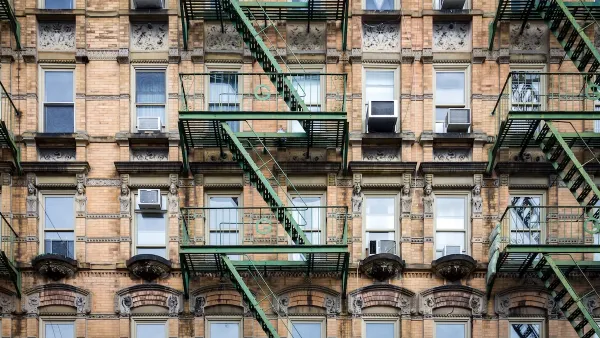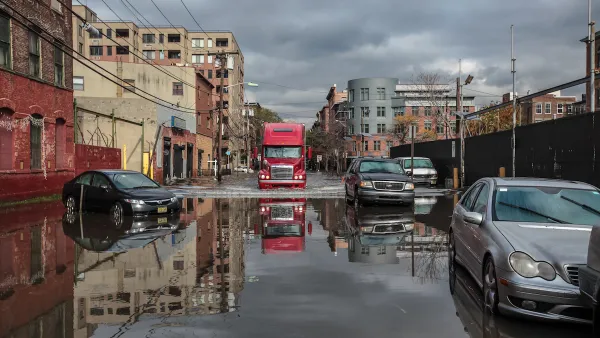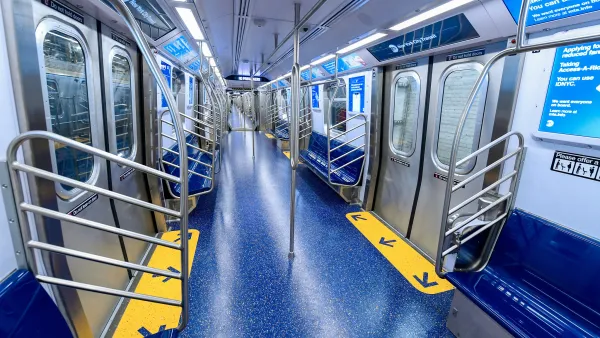Once again, the New York City Department of Transportation (NYCDOT) delightfully surprises the design community with another major leap forward in making city streets a public realm for all users (I can’t tell you how odd it still feels to write that). As if the impressive, incessant roll-out of bike lanes, successful implementation of the “Select Bus Service”, and the unprecedented changes to Times Square and its environs weren’t enough to pique the imaginations of New Yorkers used to streets built for cars, NYCDOT has just issued their “2009 Street Design Manual”. Planners and Engineers, get ready for a thrill!
Once again, the New York City Department of Transportation (NYCDOT) delightfully surprises the design community with another major leap forward in making city streets a public realm for all users (I can't tell you how odd it still feels to write that). As if the impressive, incessant roll-out of bike lanes, successful implementation of the "Select Bus Service", and the unprecedented changes to Times Square and its environs weren't enough to pique the imaginations of New Yorkers used to streets built for cars, NYCDOT has just issued their "2009 Street Design Manual". Planners and Engineers, get ready for a thrill!
Don't let the year in the name fool you; if you've endured the rigors of learning the ropes of roadway design in New York City, then you know well enough that such a comprehensive document has never existed to guide the designer through the complexities of one of the most challenging processes known to man (Full disclosure: that might be a slight exaggeration). It is with great joy (and relief) that I can dispense with the ten-times-photocopied half-sheet details and loose collection of materials assembled over the years that substituted for a comprehensive design manual, and share with you a document that stresses the importance of accommodating all modes, offers a broad range of design treatments, and is bursting at the seams with visual examples and precedents from around the world (for illustrative purposes only, of course!).
So don't waste any more time reading my banter, dig into the 2009 Street Design Manual right away and discover the eerily new NYCDOT; it may in fact be the perfect set of guidelines for other cities to adopt in their pursuit of a safer, more balanced public street space. Enjoy!
http://www.nyc.gov/html/dot/html/about/streetdesignmanual.shtml

Analysis: Cybertruck Fatality Rate Far Exceeds That of Ford Pinto
The Tesla Cybertruck was recalled seven times last year.

National Parks Layoffs Will Cause Communities to Lose Billions
Thousands of essential park workers were laid off this week, just before the busy spring break season.

Retro-silient?: America’s First “Eco-burb,” The Woodlands Turns 50
A master-planned community north of Houston offers lessons on green infrastructure and resilient design, but falls short of its founder’s lofty affordability and walkability goals.

Test News Post 1
This is a summary

Analysis: Cybertruck Fatality Rate Far Exceeds That of Ford Pinto
The Tesla Cybertruck was recalled seven times last year.

Test News Headline 46
Test for the image on the front page.
Urban Design for Planners 1: Software Tools
This six-course series explores essential urban design concepts using open source software and equips planners with the tools they need to participate fully in the urban design process.
Planning for Universal Design
Learn the tools for implementing Universal Design in planning regulations.
EMC Planning Group, Inc.
Planetizen
Planetizen
Mpact (formerly Rail~Volution)
Great Falls Development Authority, Inc.
HUDs Office of Policy Development and Research
NYU Wagner Graduate School of Public Service





























